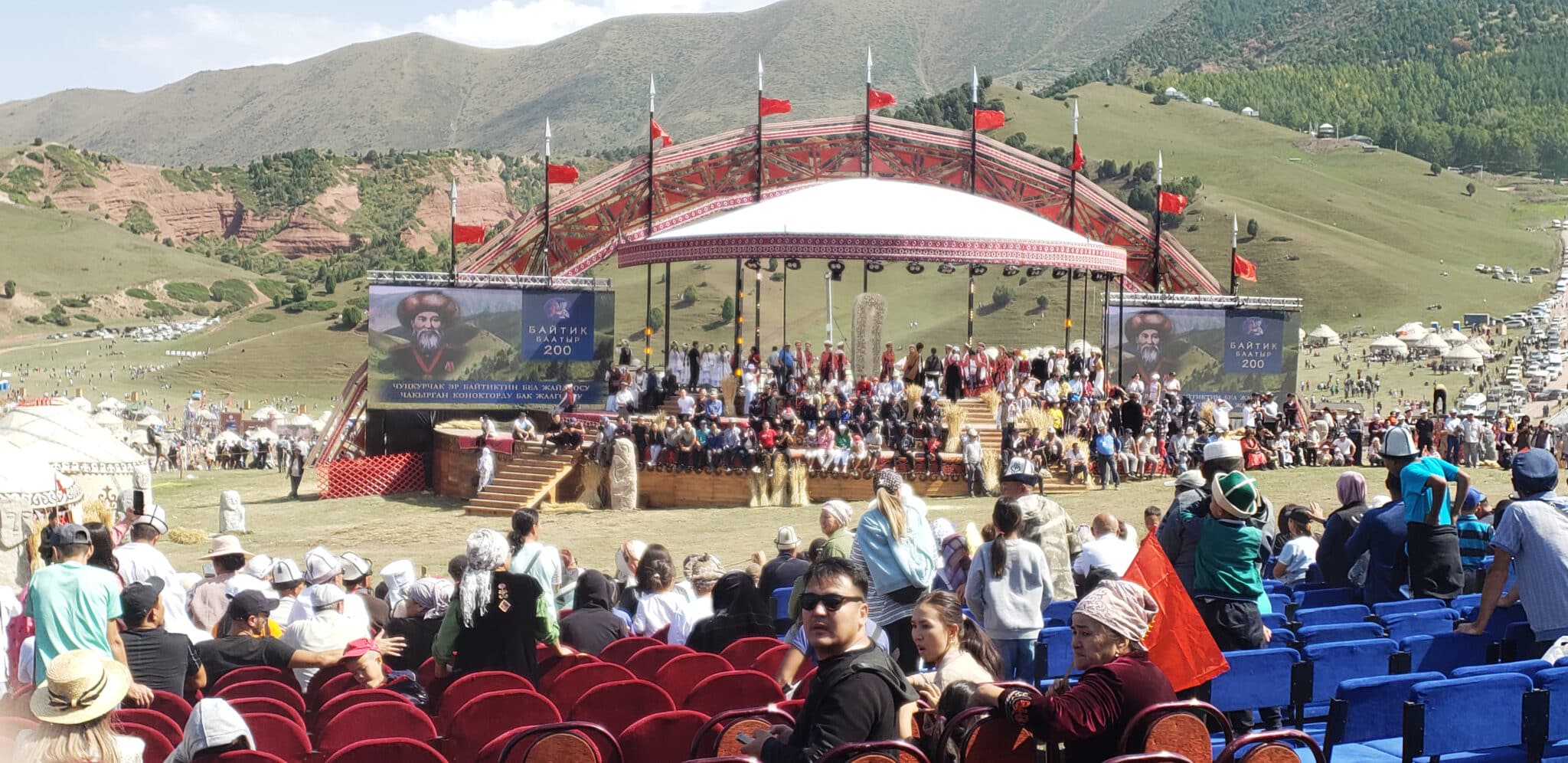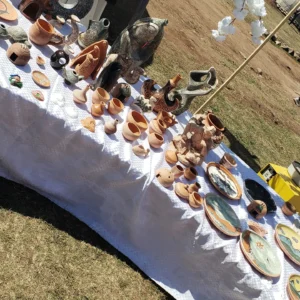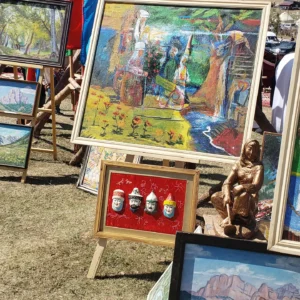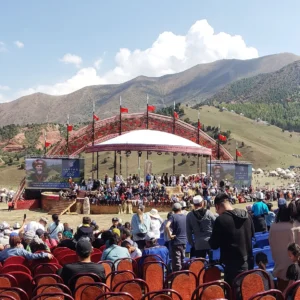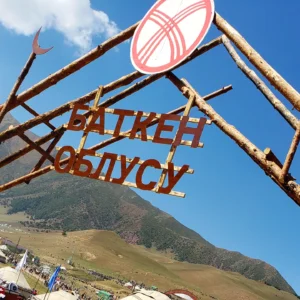Kyrgyz Independence Day is celebrated each year on August 31. It marks the date when, in 1991, Kyrgyzstan declared itself an independent republic and left the USSR.
One of my fellow classmates at my university back in America, who had studied abroad a year prior, highly recommended attending Independence Day celebrations in Kyrgyzstan, noting that, for them, it was “an unreal” experience. I was intrigued. Luckily, an opportunity presented itself when an SRAS student’s host father invited students at the program to come to Chunkurchak, a small town about 15 miles south of Bishkek that is known for particularly spectacular views (in a country known overall for its spectacular views). The city has a recreation complex that includes skiing and, in the warmer months, a wide-open fair grounds.
This year, Independence Day also coincided with the 200-year celebration of the birth of Baitik-Baatyr, a Kyrgyz leader who freed the Kyrgyz people from the oppressive rule of the Khanate of Kokand. Thus, the Kyrgyz state organized an unprecedented large-scale celebration, with free admission at the Chunkurchak Complex.
To get there, I rented a marshrutka for the day with other SRAS students for about 7,000 som (~$85 USD). Divided among the 16 of us who went, the cost of each was only about $5.25.
Upon our arrival to the event, we were surprised to see the enormous crowds of people milling around, considering that the advertising for it was primarily word of mouth. The Ministry of Internal Affairs reported that over 40,000 citizens came to the complex to celebrate. As soon as we gathered our bearings from the precarious mountain-side marshrutka ride, we broke off into smaller groups to cover more ground.
The Chunkurchak Grounds were broadly divided into three parts for the event. The first section, on the upper-to-mid left side, housed various cultural displays in addition to an archery competition. In the first section, each of Kyrgyzstan’s seven regions, Batken, Chui, Issyk-Kul, Jalalabat, Naryn, Osh, and Talas, had individual spaces to display items, customs, and music that encapsulated their regions. Every space was marked by an arch with large lettering spelling out the region’s name centered on the top and contained yurts with dining arrangements filled with said region’s local delicacies. Although guests were permitted to look in the yurts, the food seemed to function primarily as showpieces alongside a means of feeding those working the event. Minority ethnicities, such as Ukrainians and Russians, had smaller lots too.
The remainder of the left side was occupied by a mini-bazaar vendors selling traditional Kyrgyz clothes, accessories, and other goods in addition to a food court. A lot of the merchandise in the mini-bazaar was what one would expect: the traditional Kyrgyz hat for men, the kalpak, hand-crafted bow and arrow sets, and jewelry. Nonetheless, some items caught me off guard. If well-equipped with a generous amount of spending money, one could purchase Soviet pins, fur hats, swords, and wolf fur rugs.
The food court area offered a wide array of dishes varying from traditional to remixes of foreign food. I tried shashlik, originally a Caucasian dish that has become popular in Kyrgyzstan. It consists of chunks of skewered meat, traditionally lamb, that is grilled and served with a side of vegetables. The shashlik I tried was chicken and served with spiraled onions. I was pleasantly surprised by how tender and flavorful the meat was. It reminded me of a juicer, milder version of American barbeque. I also had a sample of borsok, a simple fried bread typically paired with jam or local varieties of cheese or butter. Borsok can be found in many regions of Central Asia and it acts as a conduit for honoring the dead. It is believed that the aroma and smoke produced from frying the borsok ascends to the heavens and feeds the ancestors of those who prepare it. Borsok is a delightful delicacy that resembles doughnut holes but lacks their overly saccharine taste, being able to go either sweet or savory.
Nearly the entirety of the right side of the grounds was dedicated to displaying an intermix of choreographed dances, wrestling, and horse tricks. Kyrgyzstan’s national game of chuko (sometimes called altchiki), which is played with small sheep bones, was also included. Throughout the course of the event, a consistent flow of entertainment was provided at a centralized stage. I was able to catch a glimpse of the wrestling competition and the majority of the horse show. Although the wrestling competition, personally, did not pique my interest, the horse show was spectacular. It was like nothing I have ever seen before, performers were doing full 365 spins, sword tricks, and other daring stunts on the backs of galloping horses.
Chunkurchak was a one-of-a-kind experience that I will remember fondly. Apart from the delicious food, intriguing displays, and dumfounding horse stunts, it gave me a deeper understanding of Kyrgyz identity and how complex it has become due to tribal associations and growing immigration.
Regional and tribal distinctions seem to, in many aspects, trump a unified national identity. Forty tribes have historically resided in Kyrgyzstan within its seven regions and I was left with the impression that people, firstly, identified with their tribe and region and secondly with their country. During the event, one could count a larger number of tribal flags flying along with the national flag. Further, when talking to others at the event, people would be sure to identify what region they are from and their tribe, regardless of the context of the conversation.
The inclusion of ethnic minorities at Independence Day, to me, signals a growingly civic sense of identity in the country. The presence of these cultural displays shows that non-ethnic Kyrgyz people are considered part of the patchwork that makes up Kyrgyzstan as a country. However, it ought to be noted whereas numerous ethnic enclaves were represented in the cultural displays, certain populations of immigrants, like Indians and Pakistans who face discrimination in Kyrgyzstan, were not. Additionally, those who were attending the event and those presenting at it, were overwhelmingly Kyrgyz. As an American in Bishkek, I stuck out more than in everyday life in the city. Several times, I, and other students were politely asked if we were willing to be in a picture with random event attendees due to the sheer novelty of an American, let alone a non-Kyrgyz person, being there.
Ethnic and tribal attachments, while they do seem to hold considerable weight on what it means to be ‘Kyrgyz,’ there appears to be a growing acceptance of select groups of immigrants who, if they accept Kyrgyz cultural norms and practices, can assimilate to an extent.
Overall, Independence Day at Chunkurchak is an event I would highly recommend attending, provided that it will be held in the upcoming years. As an American, it gives a comprehensive picture of Kyrgyzstan as a country culturally and politically.

